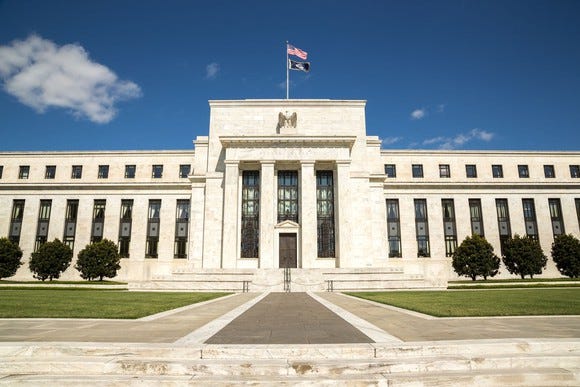LATEST FINANCIAL NEWS
Fed rate cuts without recession typically boost stocks
[ad_1]
The Federal Reserve is on the verge of cutting interest rates, consumer spending is healthy, corporate earnings are looking so-so and the global economy appears shaky.
Amid the mixed signals, is it a smart move to keep investing in stocks?
Financial analysts have a time-worn message: Don’t fight the Fed. In other words, stop thinking so much. Or, as John Lynch, the chief investment strategist of LPL financial put it in a note to clients, “We’ll ride the wave.”
Markets love Fed rate cuts, which make stocks even more attractive than bonds, whose yields tend to fall when the Fed lowers its key rate. Ten-year Treasury bonds, for example, are paying a meager 2.05% in annual interest. Lower rates also spur more consumer and business borrowing, which sparks economic activity.
Another huge data breach: Capital One hit, affecting more than 100 million customers
Taking precautions: Capital One data breach fallout: How to protect yourself
“If the Fed is going to be a tailwind (for stocks), I’ll take it,” Lynch told USA TODAY in an interview.
Investors especially love Fed cuts when there’s no recession forcing the Fed to act. That’s because it creates an unusual best-of-all-worlds backdrop: Lower rates and a solid economy.
Over the past 35 years, the Fed has started rate-trimming cycles five other times when there was no recession – in 1984, 1987, 1989, 1995 and 1998. The Standard & Poor’s 500 stock index rose an average 11.1% during the six months after the first cut, according to LPL. Twelve months after the initial rate reduction, the broad index gained an average 15.8%.
On Wednesday, the Fed is expected to slice its key rate by a quarter percentage point to head off a potential recession amid a slowing global economy and the U.S. trade war with China.
The logic: It’s better to act now to immunize the economy because historically low rates give the Fed little room to cut in case of a downturn. The central bank enacted a similar “insurance cut” in 1998 when a Russian financial crisis threatened to upend strong U.S. growth.
Trump and the Fed: Trump tweets Fed interest rate cut “will do very little” compared to Europe and China
Lynch isn’t so confident the S&P 500 – up 20.5% so far in 2019 – will climb higher this year. He cites slowing growth in the U.S. and around the world, the trade standoff, sluggish business investment and weak corporate profits. He’s maintaining his S&P year-end target of 3,000, marginally below its current 3,021.
But he wrote in the research note, “We don’t think it’s time to sell because this market is giddy about rate cuts.” And he adds, “The bull market may have more room to run.”
The firm, he says, would consider raising its forecast if a resolution of the trade fight and Fed rate cuts bolster the corporate earnings picture. At the same time, he says the estimate could be lowered if investors’ glee over Fed cuts goes too far, or market and economic fundamentals weaken.
S&P 500 shares appear a bit pricey at 17.1 times projected earnings over the next 12 months, above the average 16.5 multiple the past five years, according to FactSet. But Lynch says they’re fairly valued in light of low interest rates that make stocks more attractive.
Jonathan Heckscher, chief investment officer of Pennsylvania Trust, thinks the Fed rate cut will drive stocks higher this year. And while the move is largely priced into stocks, he says that any Fed signals Wednesday of another rate reduction later this year could nudge stocks higher.
Dwindling income: Bucking the trend: The 10 US cities where incomes are shrinking the fastest
Lynch is warier. Although investors expect a quarter-point cut, they may still be hoping for a half-point reduction. A quarter-point move, he says, could lead to a short-term stock selloff, though he expects a recovery by year-end.
More broadly, Heckscher believes the Fed’s move Wednesday will support the market for the next six months. But by the first half of next year, he says, the trade conflict needs to be resolved and the global economy must strengthen, bolstering corporate earnings.
Otherwise, he says, feeble business hiring and investment will begin to hurt consumer spending, which makes up about 70% of economic activity, further dampening corporate profits and stocks.
“That will start to trickle down into the economy over time,” Heckscher says.
[ad_2]
Source link









